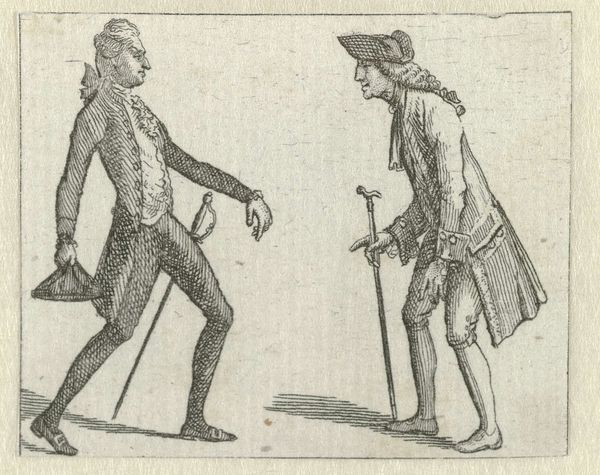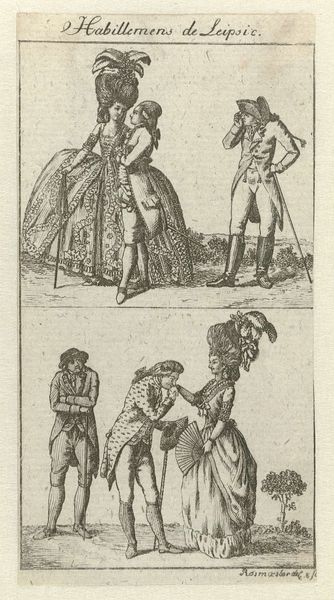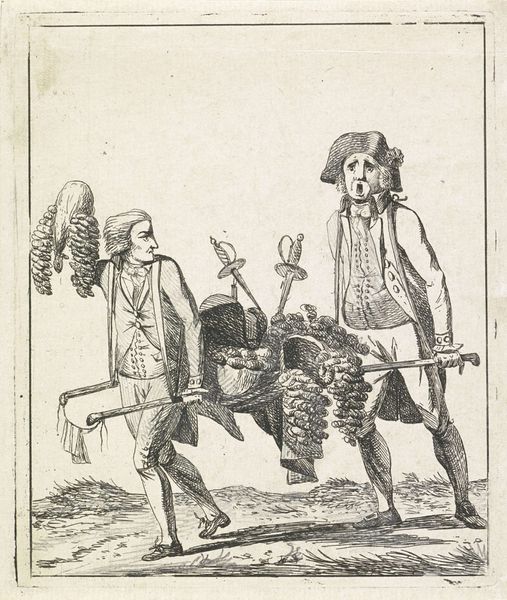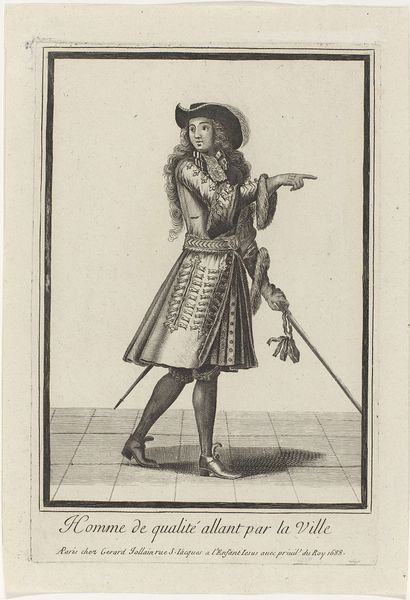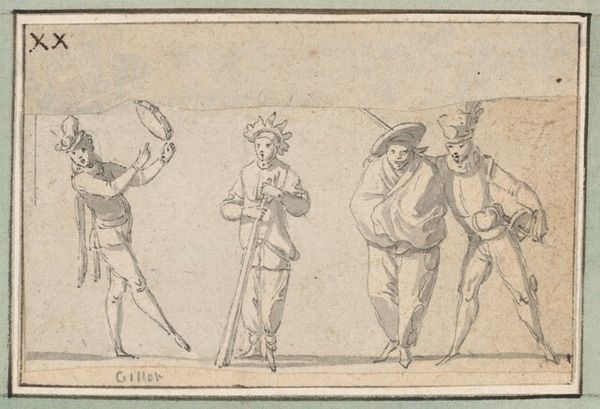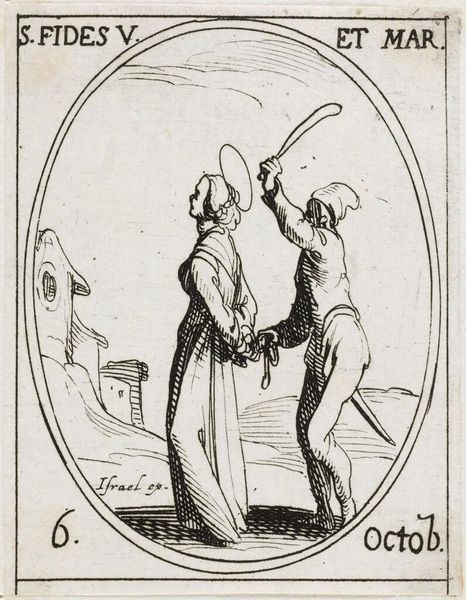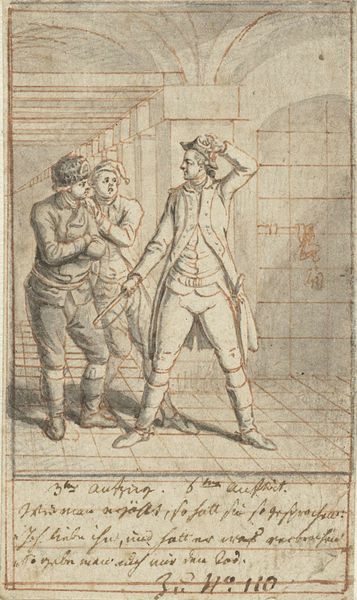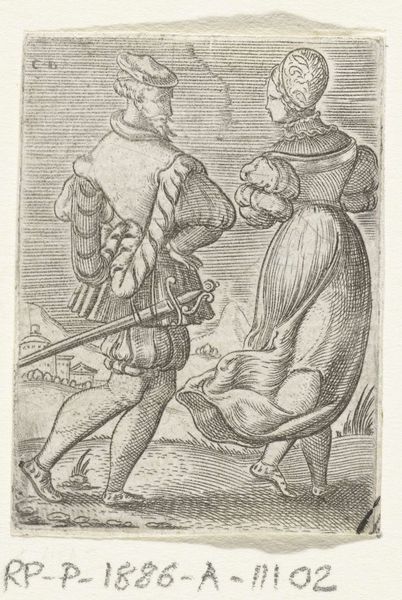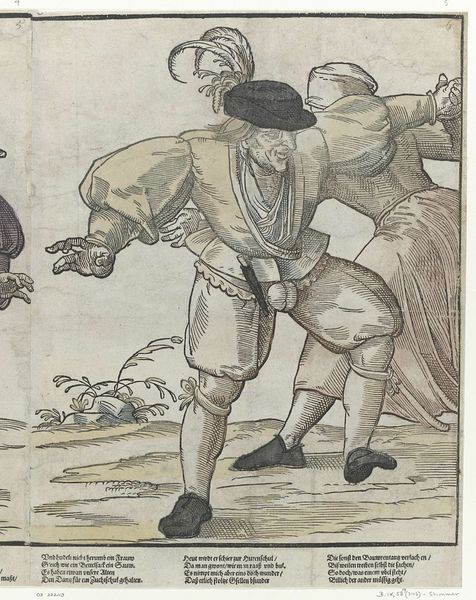
Habillemens de Leipsic. ca. 1785-1786: twee mannen met wandelstok c. 1785 - 1786
0:00
0:00
Dimensions: height 43 mm, width 52 mm
Copyright: Rijks Museum: Open Domain
Curator: This print by Ernst Ludwig Riepenhausen, titled "Habillemens de Leipsic. ca. 1785-1786: twee mannen met wandelstok," offers a glimpse into the fashions and social dynamics of 18th-century Leipzig. The etching, enhanced with graphite, captures two men with walking sticks, showcasing the typical attire of the time. Editor: My first thought? A study in gestures, right? They're like characters caught mid-scene, the fellow on the left shielding his eyes as he holds his hat. And the guy on the right with that dramatic pointing finger—it's got so much theatrical energy, even in this small print. Curator: Indeed. Consider that this work exists amidst broader societal structures defining class, gender, and performance. How do the clothing styles signify status, and what roles are these men performing within their social sphere? The walking sticks, for example, can be viewed as symbols of power and mobility within the urban environment. Editor: Power, yes, but maybe also affectation. I mean, that furry trim, those elaborate hats – it’s like they’re saying, "Look at me, I've got places to be and opinions to share!" Maybe they're off to the opera or…plotting some mischievous adventure. Curator: Let’s also note how the baroque aesthetic influenced the artist's depiction of the subjects. There's a certain elegance in their poses and attire, which aligns with the period's emphasis on decorative embellishment and social grace, but it is subdued through the graphic approach, becoming more like a quick study than a full baroque presentation. Editor: Subdued, exactly. It’s less about idealized beauty, more about capturing real guys, on the go. It's this kind of genre painting snapshot thing. But tell me, does anyone know where in Leipzig they're strolling around, or are we just left with fabulous outfits and unanswered questions? Curator: Unfortunately, details about their precise location or narrative are lost to history. But by understanding how fashion, power, and place intersect, we can better understand their role within the societal power dynamics of their time. Editor: True. They become these intriguing shadows, flitting through history. A fun way to spark the imagination. And really, that’s half the fun, isn’t it?
Comments
No comments
Be the first to comment and join the conversation on the ultimate creative platform.
